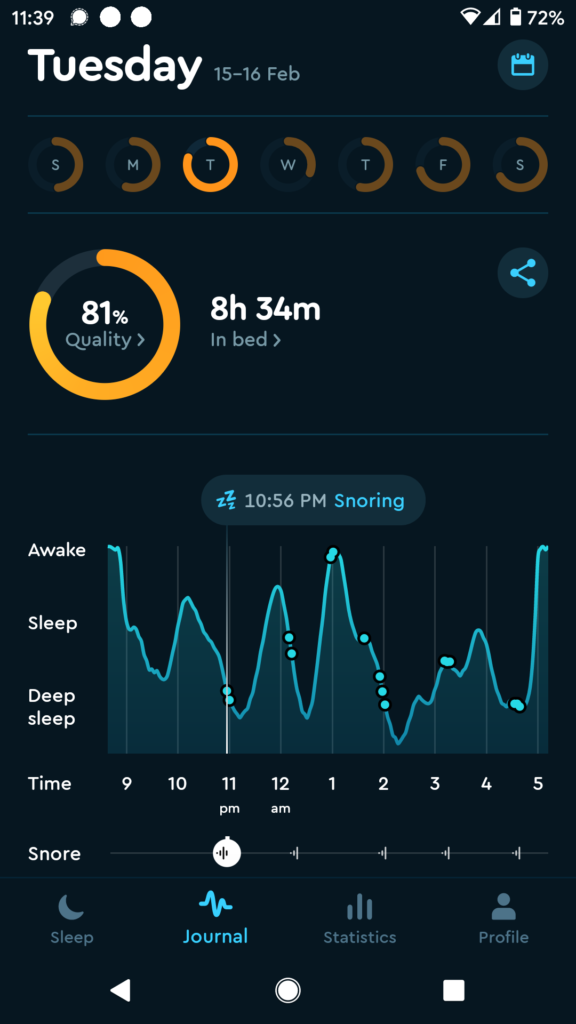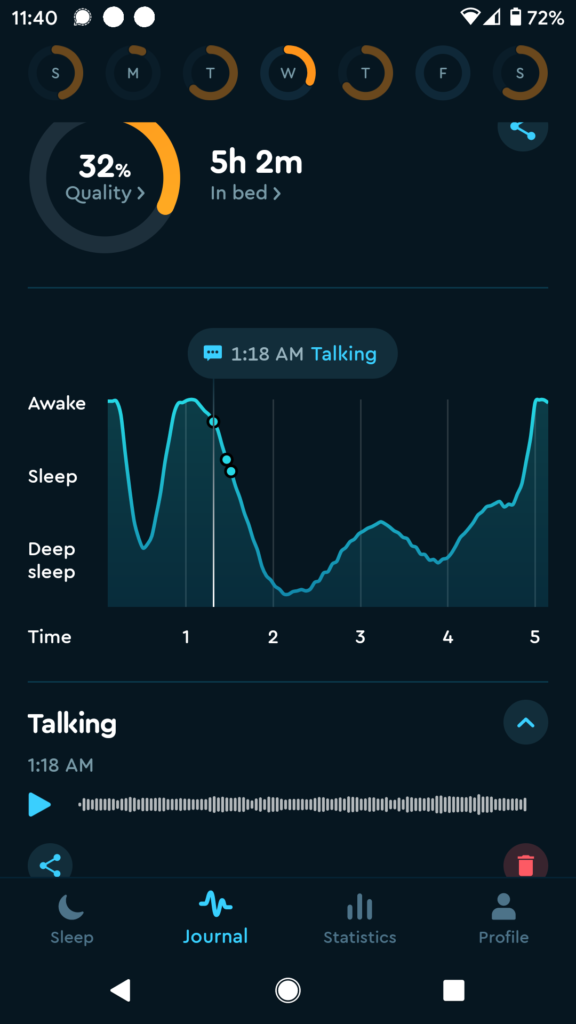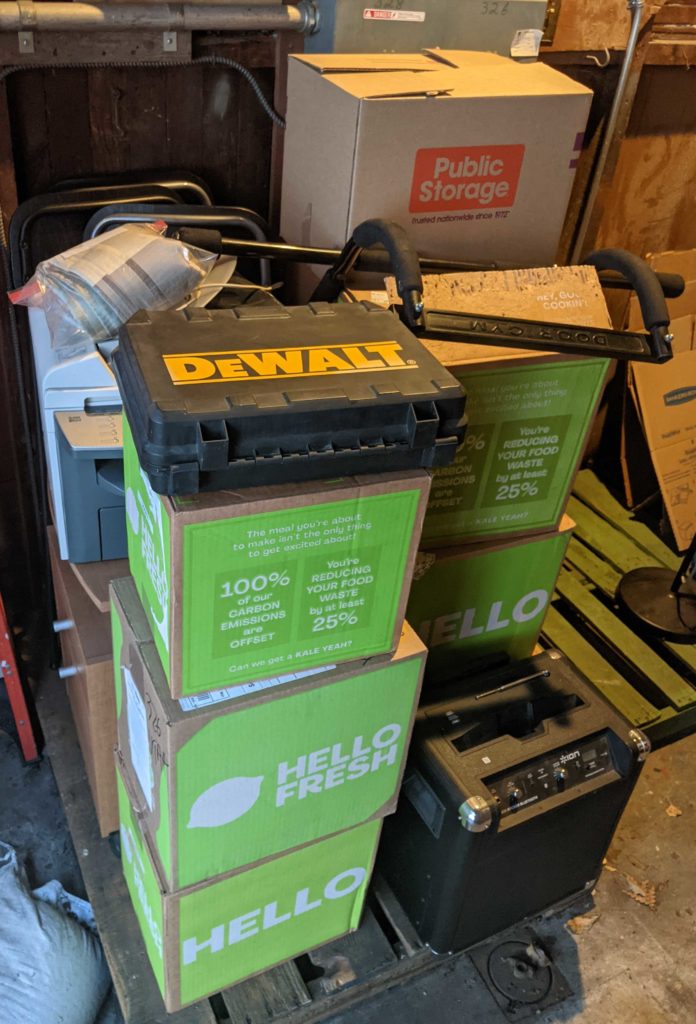Social anxiety is insatiable. It not only screams at me for attention when I’m around people or thinking about a future social event. It also loves to play back its video library of the many awkward experiences we’ve shared in the past.
There’s one story in particular that social anxiety has decided to tell me over and over again. It took place at least fifteen years ago, yet I can still remember much of it in vivid detail.
It started out with me meeting with several friends I had known since my early teens. With them was an attractive woman I’d gone to high school with but never gotten to know.
We all started the night by heading to what continues to be one of the most terrifying settings for me: a dance club. Most of the time when dancing is involved, I like to hide in a corner and nurse my drink. When I do dance, I typically keep to myself, sway to the music, and try not to make eye contact with anyone. I have very little experience dancing with other people, and I try to keep it that way.
Enter the attractive woman from high school. She asked me to dance. I resisted, but after some encouragement, I followed her onto the dance floor. My heart was racing from self-consciousness. I started to sway, keeping a safe distance. She did her best to mirror my movements and smile. By the end of the song, I’m sure she could tell I was uncomfortable. She led me back to our friends.
Later that night, we arrived at my friend’s house. He had a pool in back and several people decided to jump in. They began joking and splashing each other and otherwise having fun. There’s not enough room for me, I thought, standing at the edge of the pool and watching in silence. My former dance partner decided that was unacceptable. She swam up to me, tugged at my shorts, and pulled them down. Shocked, I jumped into the pool to hide myself as I pulled my shorts back up. I swam closer to the group and feigned enjoyment. Underneath, I still felt like I didn’t belong.
Eventually, we got out, dried off, and headed to the living room. I sat in a chair and the shorts thief sat across from me.
“Tell me a story,” she prodded, smiling.
I fumbled through my mental file but couldn’t think of anything worthy of sharing. Instead, I sighed and said, “You wouldn’t understand my stories.”
I thought I was being mysterious. She thought I had insulted her. “Thanks a lot!” she shouted as she stormed out of the room. Her friends followed to console her. I sat there, dumbfounded and frozen by indecision.
I only saw her once more, over a year later at a holiday party. At that point, she had a boyfriend and had become, at best, begrudgingly polite to me.
That day is a constant reminder of how much fear and anxiety can sabotage my opportunities. My fear of looking like a fool held me back from dancing. My fear of large groups left me standing outside the pool. The pressure to tell a good story led me to say something offensive out of self-preservation and alienate someone who was trying desperately to connect with me.
In Ellen Hendriksen’s book, How to Be Yourself, she explains that for those who struggle with social anxiety, one of their main defense mechanisms is avoidance. As people identify the situations that trigger their fight-or-flight response, it’s easy to decide to just avoid those situations. Since that day, I’ve more or less avoided dance clubs unless I have about 10 or 12 drinks in me to cushion the blow.
That same tendency toward avoidance has been a driving force in my recent decisions on where to live. Four years ago, I lived in a large complex where I only met my neighbors because the person I was seeing coaxed me into attending the onsite cooking classes. After we split up, I moved to another large complex where in the span of two years, I spent a total of maybe five minutes talking to my neighbors and the rest of the time behaving like a bitter old man, hiding inside and cursing at people for slamming their doors. About one year ago, to minimize my exposure to noisy neighbors, I moved into a duplex. There I communicated with my one, upstairs neighbor through text messages when it was time to split the utility bill or I got up the nerve to ask him to turn his music down.
This year, I started apartment hunting again. My dream was to rent a backhouse–a peaceful sanctuary with no shared walls. When that option didn’t pan out, I expanded my search but ruled out most of the large complexes and any unit where I’d have someone above me.
Eventually, I decided to stop relying on the Internet and check out some apartments in person.
The first building had a vacancy in both an upstairs unit and the one below it. The one upstairs felt too hot. The one downstairs was cooler, but I asked the landlord to walk upstairs and, when I heard his footsteps above me, I vetoed that option.
The second place felt like a run-down nursing home–the interior of the unit was all white with a cold, white tile floor and an ugly patch of astroturf in the common area outside.
The third place ended up being a much bigger complex than it appeared to be in the pictures–27 units in all. However, the unit itself was upstairs and the bedroom didn’t share a wall with a neighbor. It was clean, modern, and overall pleasing to the eye. After touring the apartment, I went outside into the common area. A woman sitting outside offered to share her thoughts on the complex. I accepted, somewhat reluctantly. As I looked around at the shared seating area, barbecues, and kiddie pool, she talked about the vegetables she grew and shared from the communal garden; the nearby farmer’s market, and the outdoor yoga gatherings, occasionally stopping to say hello to a neighbor by name as they walked by.
I realized she was showcasing something I hadn’t really experienced since college–a community.
Suddenly, my dreams of isolation didn’t seem so enticing. I imagined what it would be like to step outside my apartment and have someone to talk to. I reflected fondly on the days when I lived in a dorm and neighbors would knock on my door and invite me over. I wondered if I might enjoy joining a group of locals for outdoor yoga.
I applied to that apartment the same day. Two days later, I received the news that my application was accepted. Tonight, I picked up the keys. Tomorrow, I move in.
I might even leave my door open.


